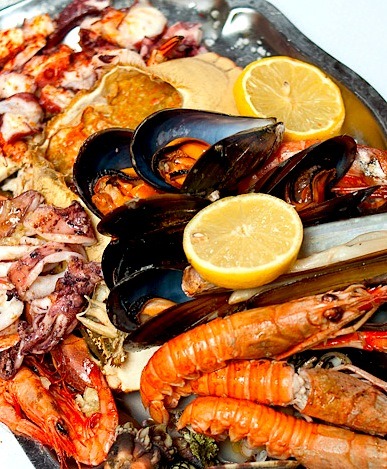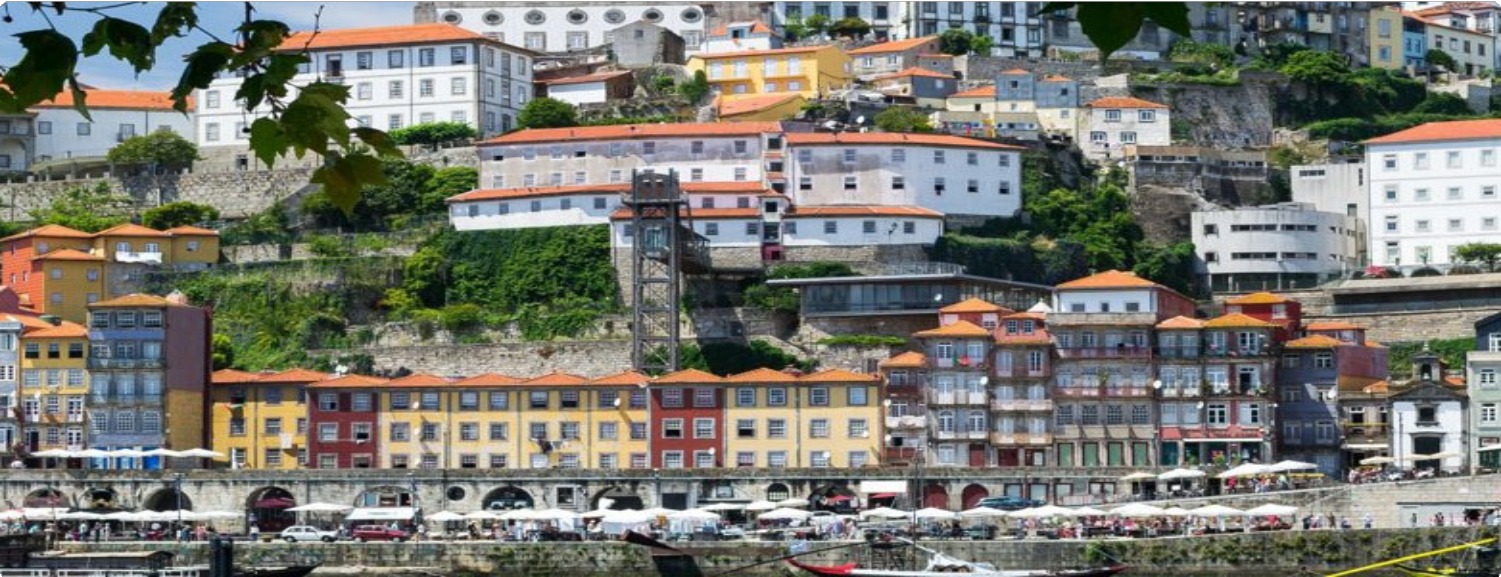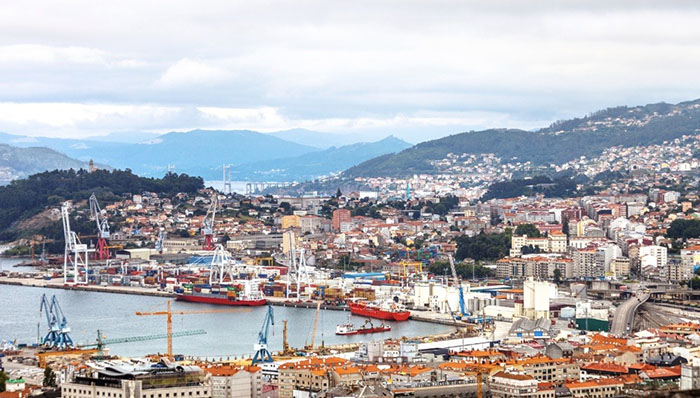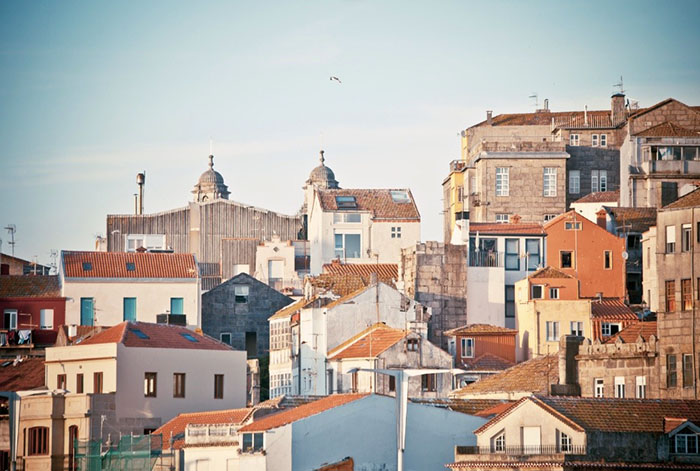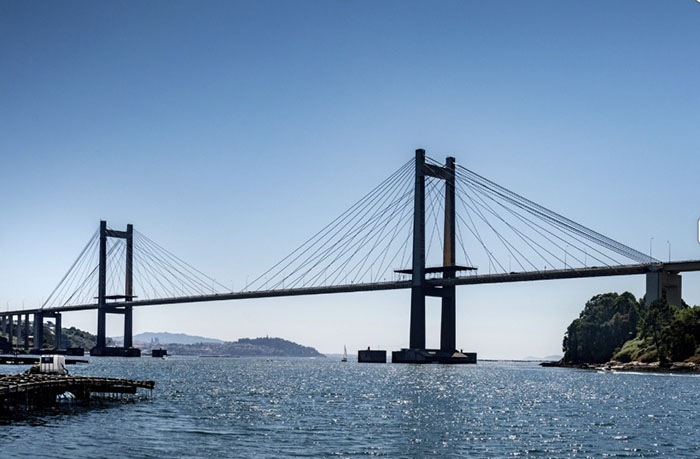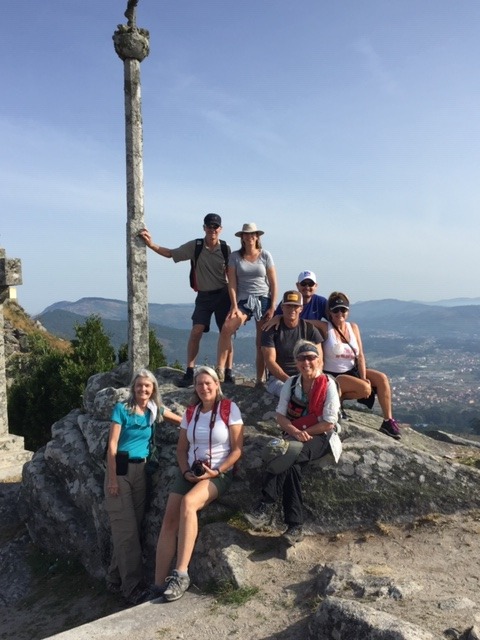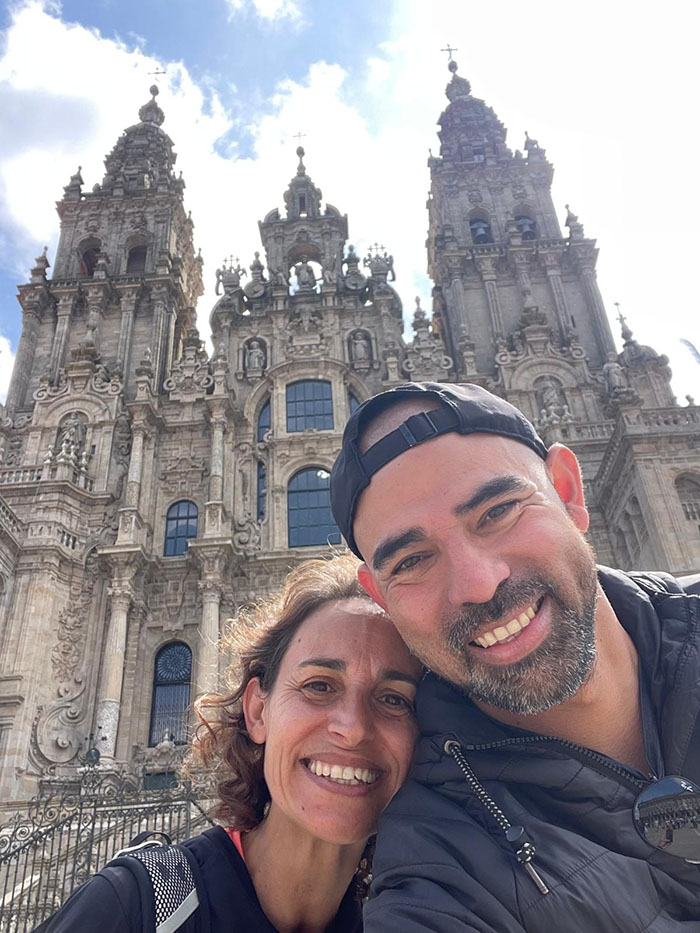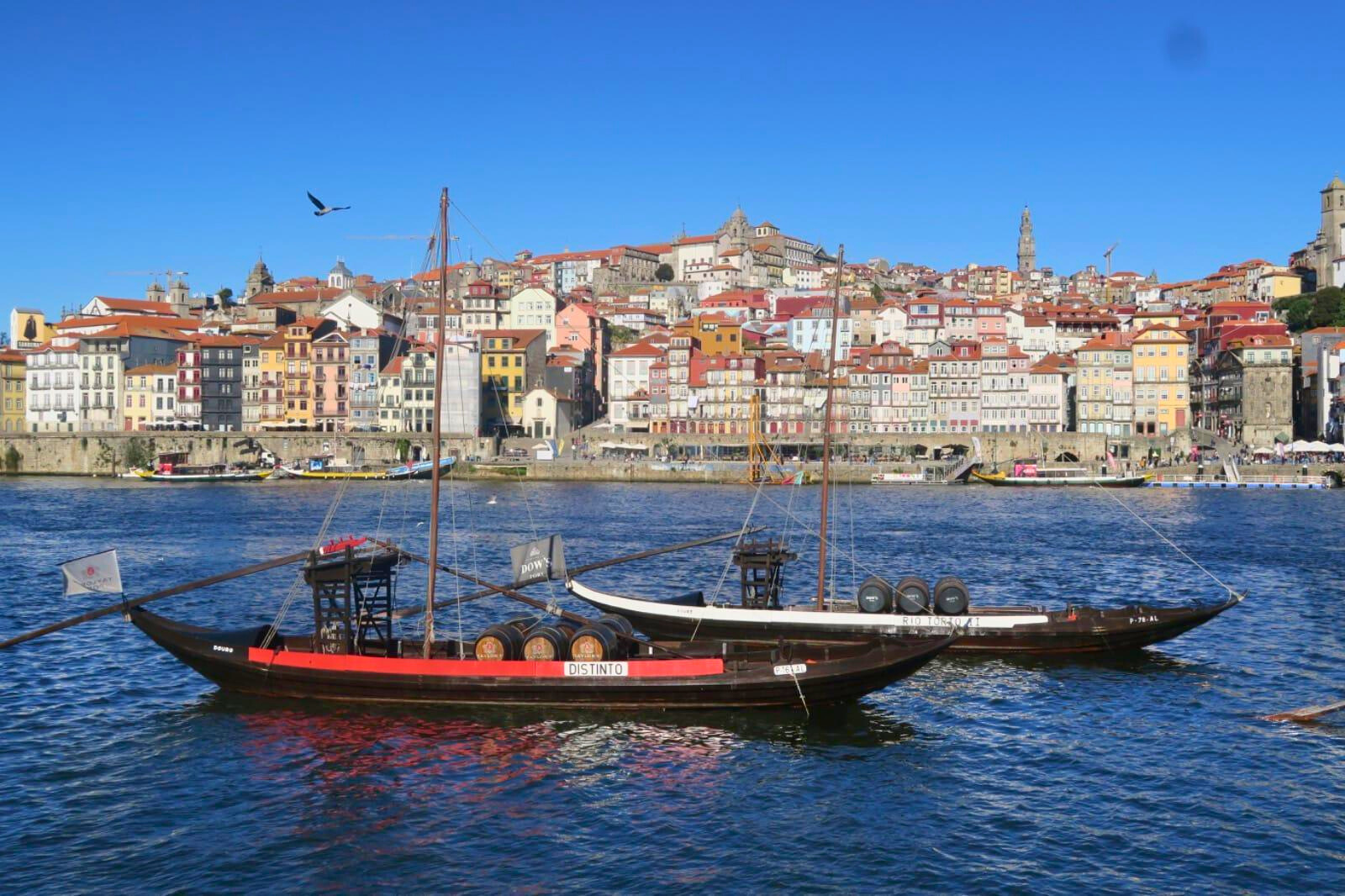
5000 EURO PER PERSON
750 EURO SINGLE SUPPLEMENT
Walk from Porto to Santiago along the Portuguese Coastal Way.
Embark on the Portuguese Coastal Way, a breathtaking route of the Camino de Santiago that follows the stunning Atlantic coastline. This journey offers sweeping ocean views, golden sandy beaches, rolling dunes, and charming fishing villages. Along the way, you’ll cross ancient Roman roads, rivers, lush forests, and vineyards, all while exploring a tapestry of historic towns across two countries.
Beginning in the beautiful and historic city of Porto, the route winds through picturesque Viana do Castelo, the medieval heart of Caminha, and into Galicia’s scenic coastal paths. Highlights include the vibrant towns of Pontevedra and Baiona. Before reaching Santiago, you’ll pass through Padrón, where, according to legend, the body of Saint James arrived by boat, marking the spiritual origin of the Camino.
This journey is rich in nature, culture, and the enduring spirit of pilgrimage.
Itinerary
Day 1 – Arrival and Porto City Walk
We warmly welcome you at 4 PM at our charming hotel in the heart of Porto (Hotel Vila Gale Porto Ribeira.) where the adventure begins with the energy of this vibrant city. Together with your guides and fellow travelers, we’ll step out for a leisurely stroll through Porto’s historic center, soaking in its unique atmosphere. Wander through the narrow-cobbled streets where centuries-old stories come alive, passing by the awe-inspiring Sé Cathedral with its breathtaking panoramic views over the city. As the sun sets, the majestic Dom Luís I Bridge lights up the sky, connecting us to Vila Nova de Gaia, famous for its enchanting wine cellars. We’ll gather later for a welcoming group dinner, sharing stories and anticipation over delicious local flavors — the perfect start to an unforgettable journey on the Portuguese Camino.
Day 2: Matosinhos, 12.1 km
Today we begin our first walking stage, leaving the lively city of Porto as we follow the Douro River downstream toward its mouth, where it flows into the Atlantic Ocean. From there, the sea accompanies us along a paved coastal path leading to Matosinhos. This gentle route offers stunning views of Porto’s skyline, the river, and the vast ocean horizon. Along the way, you’ll pass historic landmarks like Forte São João Baptista from the 16th century and Castelo do Queijo (“Cheese Castle”), a 17th-century fortress linked to the Restoration War. The beaches of Porto and Praia de Matosinhos offer refreshing spots to pause and enjoy the sea breeze. The terrain is mostly flat with a short downhill section, perfect for all walking levels. Upon arrival in Matosinhos, savor a delicious seafood lunch — the town is famous for its fresh catch and authentic flavors. Afterwards, a relaxing walk to your hotel will complete this memorable day.
Day 3: Matosinhos → Vila do Conde, 21.9 km
Today’s route follows the stunning coastline, starting with a crossing of the Moving Bridge near Mercado de Matosinhos and Leça da Palmeira. Along the way, you’ll see the 17th-century Leça da Palmeira Fort, built during the Restoration War, and the old refinery, now inactive. We pass Praia da Memória, linked to the Liberal War, then continue through charming coastal villages like Angeiras, Praia de Labruge, Castro Sampaio (an ancient castro site), and Vila Chã. Crossing the Rio Ave River, we reach Vila do Conde, a delightful town by the sea. Highlights include the 14th-century Santa Clara Monastery, now a beautiful hotel, and a remarkable 17th-century aqueduct. This day combines breathtaking sea views, rich history, and local culture, making it a memorable stage of the Camino.
Day 4: Vila do Conde → Esposende, 24.2 km
Today’s stage takes you along the beautiful northern Portuguese coast, passing through lively towns and peaceful natural spots. From Vila do Conde, the route leads to Póvoa do Varzim and A Ver-o-Mar, continuing towards Aguçadora before reaching Apúlia, with its charming surroundings and historic mills. The path then heads to Fão, known for its delicious clarinhas (small clams), and crosses the impressive Metical Bridge over the Cávado River, featuring design influences from Eiffel. The day finishes in Esposende, a quaint town with flat terrain and mostly sidewalks, perfect for a relaxing evening stroll. Nearby, the Parque Natural do Litoral Norte offers vast dunes and rich biodiversity, showcasing the natural beauty of this coastal region.
Day 5: Esposende → Viana do Castelo, 22.2 km
Today’s walk leads you through charming coastal and inland landscapes. After leaving Esposende, the route passes Marinhas, Belinho, Castelo de Neiva, Chafé, Anha, and Darque. Unlike previous stages, here the path moves inland after Marinhas, taking you away from the beach but offering a beautiful trail along the banks of the Neiva River. Crossing the river is a unique experience, stepping across a stone slab platform. Castelo de Neiva is notable for hosting the oldest church dedicated to Santiago outside Spain, dating back to 862. Then, you’ll cross the impressive Eiffel Bridge over the Lima River to reach Viana do Castelo, a picturesque city nestled between mountains, river, and sea. Don’t miss tasting the famous Bolas de Berlim at Pastelaria Natário. For spectacular views, take the funicular railway up to the Sanctuary of Santa Luzia.
Day 6 – Viana do Castelo → Âncora, 19.5 km
Today’s stage features a scenic coastal walk with gentle hills and occasional inland detours. Starting from Viana do Castelo, you will follow the beautiful Senda Litoral trail, passing through the charming villages of Afife, Gelfa, Forte do Cão, and finally reaching Vila Praia de Âncora. The route remains close to the coast, offering stunning ocean views and tranquil beaches. This section combines natural beauty with a peaceful seaside ambiance, making it a rejuvenating experience. Some pilgrims opt for a variation at Caminha towards Valença do Minho, but our journey continues along the coast.
Day 7: Âncora → A Guarda, 16.3 km
An exciting day awaits as Spain comes into view! The route offers incredible panoramas of Santa Tecla and the mouth of the Minho River. We’ll walk past to the historic Fortress of Ínsua, and into the magnificent Camarido Forest, reaching the charming town of Caminha a perfect spot for a last pastel de nata and Portuguese coffee before crossing the border. The journey continues with a scenic boat crossing over the Minho River into Spain, arriving at A Guarda. If time permits, a visit to the hilltop sanctuary of Santa Tecla will offer breathtaking views and a glimpse into local history. The path from Âncora to Caminha is mostly flat, making for a comfortable and enjoyable walk.
Day 8: A Guarda → Mougás, 19.4 km
Today’s route takes you along undulating terrain with breathtaking coastal stretches. Leaving A Guarda, you’ll walk through Oia and enjoy the dramatic landscapes shaped by the constant wind and storms that sculpt this wild shoreline. The sea will be your steadfast companion, offering panoramic views and a sense of untamed nature. The area’s raw beauty is a highlight of this stage, inviting moments of reflection and awe. We’ll end the day in Mougás, near Baiona, where staying overnight in Baiona is a great choice to have time to explore this charming town known for its rich maritime history and inviting atmosphere.
Day 9 : Mougás → Nigrán, 16.3 km
Today’s stage offers a delightful journey through Galicia’s coastal beauty. Starting from Mougás, the path leads inland to As Mariñas, a scenic area known for its picturesque landscapes. Continuing through Baiona, a charming town rich in history and culture, you’ll pass through Ramallosa before reaching Nigrán. Along the way, enjoy stunning views of the Islas Cíes and Cabo Silleiro, both notable landmarks in the region. Baiona, with its beautiful marina and historical sites, offers ample opportunities to explore and immerse yourself in the local atmosphere.
Day 10 : Nigrán → Vigo, 22.1 km
The route from Nigrán to Vigo follows the beautiful Atlantic coastline with views over the Ría de Vigo, an important estuary and natural harbor. The terrain is mostly flat to gently undulating, making it accessible and enjoyable for walkers. The path passes through Saiáns, a small village with local charm, and San Miguel de Oia, known for its monastery ruins and coastal scenery. The route then continues to Bouzas, a traditional fishing neighborhood of Vigo, where you can see the historic port and lively market. Walking along the shore, pilgrims enjoy panoramic views of the estuary dotted with islands and fishing boats. Vigo itself is Galicia’s largest city, famous for its seafood gastronomy, vibrant cultural life, and historic quarter. Highlights in Vigo include the old town (Casco Vello), the port area, and parks like Castro Fortress, which offers expansive views of the city and sea.
Day 11 : Vigo → Redondela, 15 km
Today marks the beginning of the final 100 kilometers of the Camino de Santiago. We start our day at Vigo’s Parish Church of the Immaculate Conception, locally known as “Los Picos” due to its distinctive, pointed architecture. From here, the route winds through peaceful trails and country lanes, passing through forests and quaint villages, all offering beautiful views of the bustling estuary below. Along the way, keep an eye out for the “Bateas” — traditional floating rafts used for mussel and oyster farming, a hallmark of Galician seafood culture. Vigo’s port is one of Europe’s largest fresh fish hubs, underscoring the region’s rich maritime heritage. Our day concludes in Redondela, where we’ll gather at a local café to celebrate the start of this meaningful last stretch to Santiago.
Day 12: Redondela → Pontevedra, 18 km
Redondela is where we join the central Camino Portugués and meet many fellow pilgrims on their journey to Santiago. The 12th-century Church of Santiago bids us farewell as we make our way through gentle ups and downs towards Arcade and then ascend to the high point of Alto de Canicouva. Eventually, we arrive in the historic city of Pontevedra, rich with cultural heritage and charm.
Day 13 : Pontevedra → Caldas de Reis, 22.2 km
As you leave the old town of Pontevedra, take note of the remnants of the Roman bridge and a replica of the Milário before crossing the 12th-century O Burgo bridge. Today’s walk offers a peaceful journey through gentle countryside, primarily along forest paths lined with eucalyptus and pine trees. Along the route, you’ll encounter several cruceiros, the 12th-century Santa Maria de Alba church, and small chapels dedicated to San Amaro and Santa Lucia.
After visiting San Amaro, you have the option to take a detour to the Parque Natural de Ria Barosa, a great spot for a shady picnic and picturesque waterfalls, especially refreshing after rain or on hot days. The day concludes in Caldas de Reis, renowned for its thermal waters. Known since Roman times as ‘Aquis Celenis,’ this town has long served as a resting place for pilgrims. You can soak your feet in the hot water lavadero and cool off at the nearby cold spring by the Roman bridge.
Day 14 : Caldas de Reis → Padrón, 19 km
Today’s journey is relatively short and serene, featuring gentle hills and beautiful forest paths lined with eucalyptus, pine, gorse, and broom. The climb to O Pino takes you through charming villages that offer sweeping views of the countryside. Along the way, you will encounter four historic churches, including the exquisite Santa Marina de Caracedo near the village of Campo.
Arriving in Padrón is a significant milestone on the Camino. This town is rich in legend, as it is believed to be the place where Saint James first preached and performed a miracle by making a spring appear with his staff. The name ‘Padrón’ is derived from the ‘Pedrón,’ a large stone that was tied to the boat that carried Saint James’s body from Palestine. Now displayed under the altar in the neo-classical Church of Santiago the town features the impressive Convent and Fountain of Carmen, and the hilltop Chapel of Santiaguiño do Monte, a sacred shrine accessible by 126 steps. Don’t miss trying the famous spicy green peppers, a local delicacy. We’ll then drive to our beautiful rural retreat for a two-night stay.
Day 15 : Padrón → Milladoiro, 19 km
Today, we begin our journey by climbing up to Santiaguiño do Monte in Padrón to commemorate our ‘jubilee.’ After returning to Padrón, we will embark on a varied trail featuring gentle terrain that takes us through the quiet villages of Romeris, Rueiro, and Villar. This will give us a final, close-up view of local life and the simplicity of rural Galician living.
Next, we will arrive at the impressive Baroque sanctuary of A Escravitude. From there, a climb begins through a pine forest along alternating woodland tracks and country roads, including a short stretch on a main road. As we navigate more rolling hills, we will reach the lovely village of Rua do Francos, which is nestled among ancient oak trees and is home to one of the oldest wayside crosses in Galicia.
Our path continues through more enchanting oak, pine, and eucalyptus woodlands before we begin the long ascent to the modern suburb of Milladoiro, a satellite community of Santiago. We will finish our day here and then shuttle back to our hotel.
Day 16 : Milladoiro → Santiago de Compostela, 7 km
Today, we take to the Camino one last time. Leaving behind the bustle of Milladoiro, we begin a gentle descent through scattered villages. Along the way, we catch our first glimpses of Santiago de Compostela and its iconic cathedral spires—our final destination. As we approach the city, the landscape transitions from peaceful countryside to the busy sidewalks of urban life. The final kilometers lead us up to the medieval heart of this legendary city. Our Camino walking journey culminates at the steps of the majestic cathedral, where pilgrims have arrived for centuries. We will gather for a celebratory dinner, reflecting on the memories, challenges, and joys of our journey. This moment marks both an ending and a beginning—the completion of the pilgrimage and the start of new adventures inspired by the Camino.
Day 17 : Tour End – Buen Camino
After a leisurely breakfast, a local tour guide and historian will lead us on a two-hour walking tour of Santiago de Compostela’s main sights, including the cathedral. The tour will conclude just in time to attend the Pilgrims’ Mass, a moving and unforgettable experience to celebrate the end of our journey.
* This itinerary may change slightly due to accommodation availability, weather conditions, festivals, and spontaneous side trips.
** The daily descriptions will include the number of kilometers to be covered. We are flexible regarding how much you choose to walk each day, as we have a van available to assist you, regardless of your walking preference.
*** Please remember that this is not an endurance race or a competition. We ask everyone to be respectful of the diverse paces and walking styles of fellow participants in this group trip.
**** In some instances, we may stay for two consecutive nights at the same hotel or B&B. Many people find this advantageous, as it allows for unpacking and a potential rest day if you decide not to walk on a particular day.
FAQs
How many miles do we hike per day?
On this trip, the mileage varies from day to day, but we average around 18-19 kilometers (11-12 miles). Our shortest day is 7 kilometers (4.5 miles) and the longest 24 kilometers (14.5 miles). Most pilgrims walking the trail independently walk 15 miles or 25 kilometers a day carrying a heavy pack. With Spanish Steps, we have the luxury of a fully supported van, which carries our baggage from hotel to hotel, and carries us the extra mile if one needs to jump in the van.
What kind of hotels do we use?
We use beautifully restored farmhouses known as Casa Rurales, and family run Pazos, Galician manor home and hotels. Most are located a little off route from the Portuguese Camino situated in small towns and villages, away from the large cities, so most day will involve a group transfer at the beginning and end of the day. We try to stay two nights in our hotels. All rooms have private bathrooms. The smaller inns have no phone or TV in the room.
Is there WIFI at our hotel?
Our hotels nearly always have free WIFI available although it is often just in the lobby/public areas. We generally stay at historical hotels, which often have thick walls, so WIFI rarely works in the rooms. Most bars and cafes enroute have free WIFI also.
How many meals are included?
All breakfasts and 8 dinners are included in the price of this tour. Our hotels will be happy to provide a vegetarian option should it be required. For the meals that are not included, there are plenty of shops along the trail to purchase sandwich items and fruit, or plan to eat at one of the many cafes that cater to pilgrims. The van will be stocked with healthy snacks and water. We will do our best to accommodate any dietary requirements but please do let us know in advance.
How does one get to PORTO?
- PORTO has its own airport (OPO). A short taxi ride will bring you into Porto and our hotel..
Where should I stay in PORTO before the trip?
- T The meeting point is in the lobby of the Hotel Vila Gale Porto Ribeira.
What kind of equipment should I pack?
The hikes are not fancy. We will supply you with an equipment list of basic items to pack. You are limited to one bag weighing 30-lbs and a one-day pack to hold items such as your rain gear and water bottle. Hiking/trail shoes or lightweight hiking boots will be your most important pieces of equipment. Please be sure they are well broken in and that you have proper socks before arriving in Spain. Some of our hotels have outdoor swimming pools (not always open) so bring a bathing suit if you would like to swim.
How do I access spending money/how much should I bring?
Most people travel with an ATM card. Money machines are everywhere in Portugal & Spain but be sure you know your PIN number before departing the US. Make sure your card is activated for Portugal & Spain. Most expenses are already built into Spanish Steps trips. Lunches will be a separate expense. The Menu del Dia or Menu del Peregrino is available at local cafes and will cost between 12-20 Euros. There are three course meals with wind and water included – a great value.
Should I leave a gratuity for our guides?
This is a very common question our clients ask. As a person working hard in the service industry to please the traveler, a gratuity is much appreciated by the staff members at the end of the tour. As a general guideline, people tip 10 Euro per person, per guide, or 170 Euro per person per guide.
What is the average age of the group?
The average age of the hiker on a Spanish Steps tour is 50 years old during the spring and fall months but younger during the summer months. Most trips are a mix of a 40/60 ratio of men to women. With an eager heart and a mind full of curiosity, a healthy person of any age is able to walk the Camino. Pilgrims of all ages are welcome of course!
What is the terrain like?
The trails are well marked with yellow arrows and the scallop shell tile. There are some long, slow climbs and descents through undulating countryside but not Himalayan or Rocky Mountain terrain. The paths are well worn and are not difficult. We walk along a lot of secondary farm roads, paths through vineyards, beech and chestnut forests and old country roads.
Is there a single supplement?
Some people would like to be matched with a roommate. I can’t guarantee a match but will try to place you with someone if there are any requests. The price of the single supplement is 750 EUROS per person for this seventeen-day trip.
Can you provide references?
We would be delighted to share with you some references from former clients who have walked with us. If you would like to contact any former Spanish Steps participants, let us know by calling us. Check out our Customer Comments on our website www.SpanishSteps.com.

